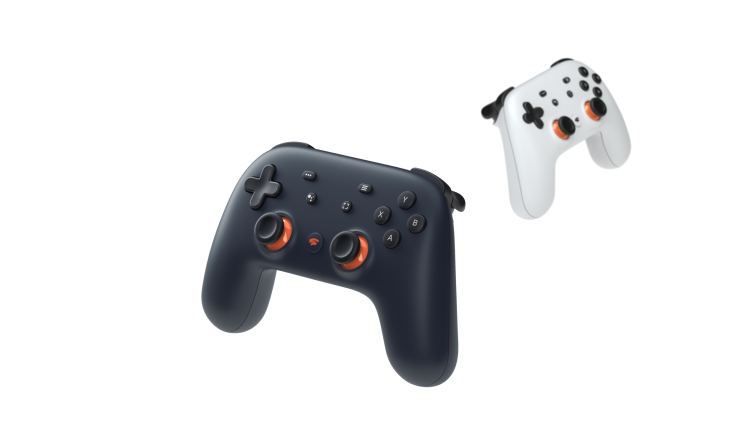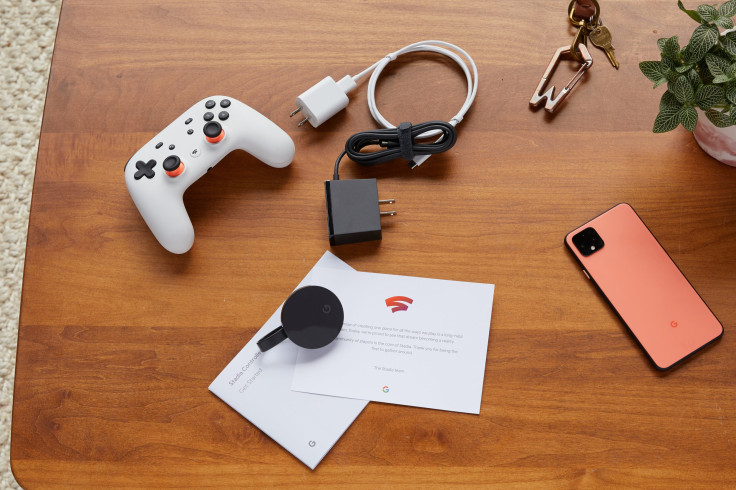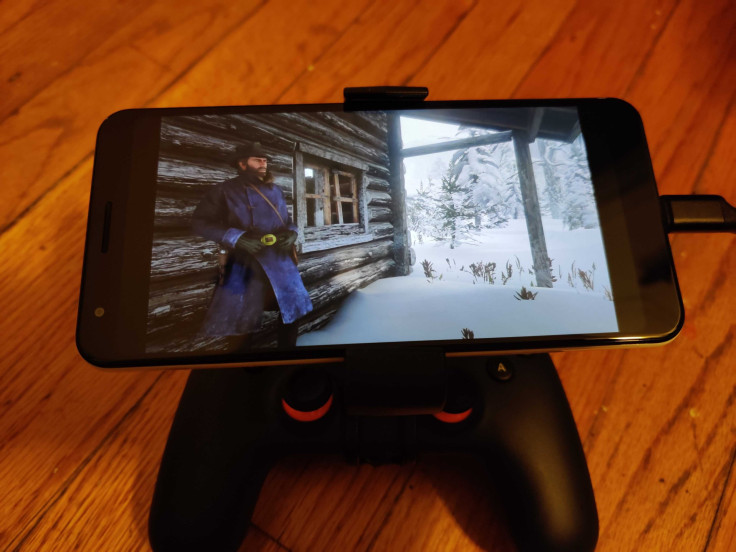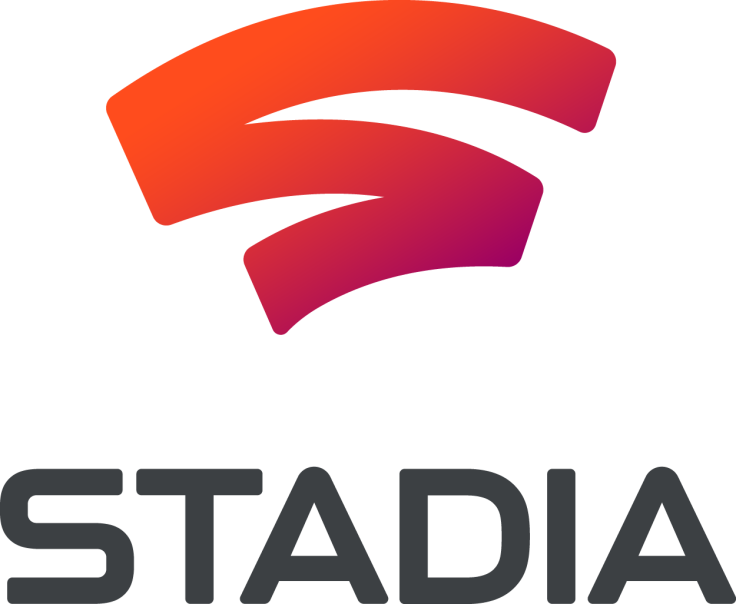Having been in the video games industry for almost a decade, it takes a lot to really wow me. I’ve watched the steady evolution of graphics over the years, and each small step is nice, but nothing breathtaking. The most recent moment I was truly wowed was the first time I used augmented reality with a Magic Leap, as it was unlike anything I had experienced before. That is, until Google Stadia.
In my one week with Stadia, the service found ways to surprise me again and again. The first time I played a multiplayer match of Destiny 2 on a cell phone was surreal. Games that are over 100GB on my Xbox One were running instantly on my five year old Chromebook. I paused a game on a friend’s desktop and turned on my phone to the exact moment I paused. This is incredible to me, and offers so much flexibility when it comes to gaming. It’s possible to play console-quality games on a wide range of devices as long as there’s an internet connection. With no download or install times, you’re also playing your games in only a few moments.
But the question I’m sure most people want to ask first is “how does Stadia run?” To my surprise, it is virtually flawless. When clearing missions in Destiny 2 or running through the jungle in Shadow of the Tomb Raider, the only major differences I noticed between Stadia and a console is that the framerate was more smooth and loading times were quicker on Stadia. Everything else, from response time to graphics quality, was virtually identical. If you are interested in Stadia as an easy way to play games wherever you have an internet connection, then it’s time to get excited.
The Stadia controller is also top-notch. It takes the best of both the PS4’s DualShock 4 and Xbox One’s controller designs and morphs them together. The controller is comfortable to hold, the sticks feel great, the buttons are nice and responsive, and the triggers have good give in that PS4 kinda-mushy-but-kinda-solid way. The only downside with the controller is the D-pad, which works fine, but doesn’t quite have that nice feedback like other D-pads, and made it seem difficult to press down in two directions at once, like if I were doing a forward jump in a fighting game.

That’s not to say there aren’t any issues, especially if you don’t have a great internet connection. Once while at a friend’s apartment, the internet connection kept quickly dropping. This not only impacted the quality of the game stream, it also caused my Stadia controller to continuously drop connection. This meant I had to go into the Stadia app on my phone to pair the controller over and over again. It got so bad I just gave up with using Chromecast altogether, plugged the controller directly into a Pixel 3a, and things were back to running smooth again.
There are three main ways to play Stadia right at launch: through a Chromecast Ultra on a TV, with a Google Pixel phone, or on any computer with a Chrome browser. Playing on mobile surprisingly was the easiest of the three options, and also it ran the smoothest. Playing on a TV with the Chromecast worked really well also, assuming you have a solid enough internet connection. However, playing through a Chrome browser had some hits and misses. Playing on a beefy gaming desktop, and even a few-years-old Macbook resulted in quality gameplay. However, I experienced some lag playing on my (admittedly ancient) Chromebook. What’s odd is another reviewer told me he had lag with his Chromebook as well, despite his machine being brand new.
Additionally, like any other online game service, the weak internet connection above meant I experienced lag when logging on to play multiplayer games. That said, I didn’t have any lag whatsoever when playing through a Chromecast on my personal wireless internet connection. If you do find your internet service cutting out completely while playing, your game does kick you out, even if you’re playing an offline game. Thankfully, if your internet kicks back on immediately, you can quickly hop back into your game right where you left off.

A streaming service can be the best quality in the world, but it doesn’t mean anything if there’s nothing to stream on it. Unfortunately, the Google Stadia launch lineup, and even the list of games coming before the end of 2019, aren’t that exciting. Most games are older releases people probably already own on other consoles, or are smaller exclusives that don’t do much to really warrant a purchase. The full launch lineup of games includes:
Assassin's Creed Odyssey
Attack on Titan: Final Battle 2
Destiny 2: The Collection
Farming Simulator 2019
Final Fantasy XV
Football Manager 2020
Grid 2019
Gylt
Just Dance 2020
Kine
Metro Exodus
Mortal Kombat 11
NBA 2K20
Rage 2
Rise of the Tomb Raider
Red Dead Redemption 2
Samurai Shodown
Shadow of the Tomb Raider
Thumper
Tomb Raider 2013
Trials Rising
Wolfenstein: Youngblood
Even if you are subscribed to Stadia you still have to pay for games. However, if we look at total cost compared to buying a console or PC comparable to the Stadia’s free base level of 1080p, 60FPS output, plus the games you would have to buy for those platforms anyway, Stadia is a huge cost saver. The $9.99 per month Stadia Pro service bumps graphics up to 4K with added HDR support, and is said to include free games. At launch, Stadia Pro subscribers have access to the full Destiny 2 experience, including all add-ons and Season Pass content, and Samurai Shodown. Google hasn’t mentioned what other free games players can expect, however, and when that new content might be made available. That said, it sounds like there will be at least one free game per month included in the Stadia Pro subscription.
A lack of features also really bogs down the overall Stadia experience. For example, there is no party chat service at launch. If you want to play games with a friend, you’ll have to hop on Discord or some other third-party service to actually communicate with each other. There’s also no way to play wirelessly on mobile devices right now, and the only phones that support Stadia at launch are Google’s own Pixel line-up.
Yes, these features will be released and expanded on eventually, but if you’re expecting Stadia to be a fully-fleshed and seamless game streaming platform right out of the box, you might be disappointed.

Of course, Stadia and the way it approaches games really raises the question about game ownership that has been floating around since the rise of digital downloads. There’s no way to actually “own” a Stadia game, in the same way you can own a disc or digital copy of any other game. If Stadia’s servers shut down, you lose everything. Granted, that’s the same thing for tons of other games out there (good luck playing Fortnite if Epic were to pull the plug on those servers), but it still feels wrong knowing you are paying for a product that could just disappear one day. I don’t have a solution to this problem, but it’s something to consider if you want to hop aboard the Stadia train.
Ultimately, whether you should get Google Stadia comes down to what you want out of a game console or platform right now, and what you want the platform to be in the future. The base service and the ability to play just about anywhere show that Stadia could be a force to be reckoned with since it already works really well and should only increase in performance and be more accommodating to weaker internet connections in the future. Once more games and features are released, Stadia will be able to stand shoulder to shoulder against PC, Xbox One, PS4, and Switch. However, that day is not today, and we won’t get there until at least some time in 2020.
My week with Stadia has left me hopeful for the service, and I want more of it. Taking all of my games with me wherever I am, and being able to hop into a game in seconds is truly amazing. The future is looking bright for Stadia, and if Google can live up to its promises, we may have reached a major turning point in the games industry.














![[EG April 19] Best 'Stardew Valley' Mods That Will Change](https://d.player.one/en/full/226012/eg-april-19-best-stardew-valley-mods-that-will-change.png?w=380&h=275&f=955520b8313253ee3c39c791f6210f38)



